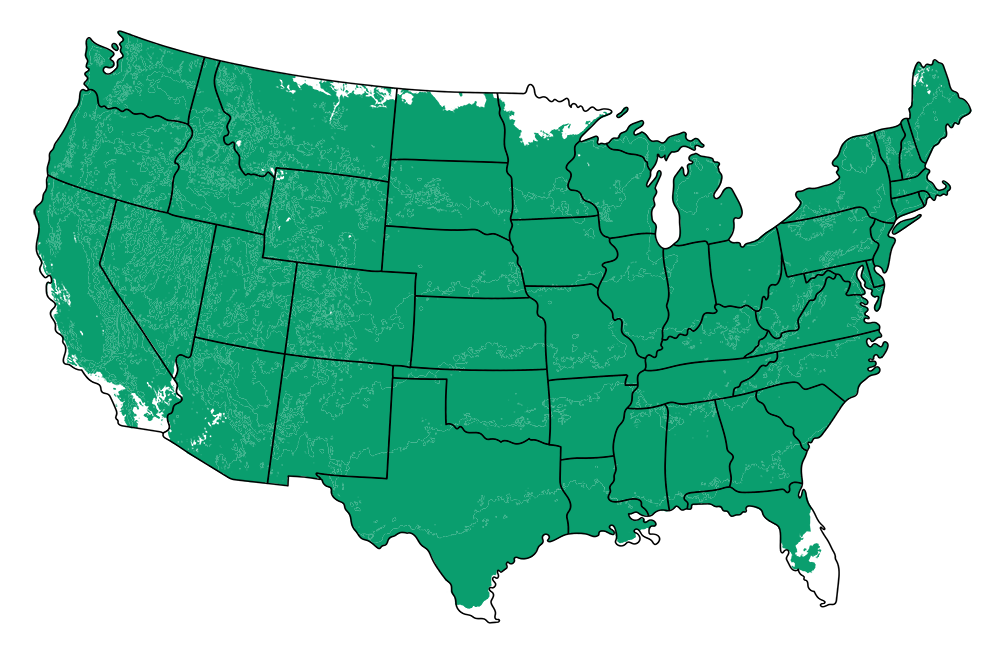Online Trees
Tulip Poplar Tree
Tulip Poplar Tree
Couldn't load pickup availability
The Tulip Poplar tree is a magnificent addition to any large property, promising rapid growth, stunning beauty, and a legacy that grows alongside your family. Often reaching a staggering height of 70 to 100 feet, this fast-growing member of the magnolia family delights with its striking tulip-shaped flowers, vibrant golden fall foliage, and robust presence. Thriving in USDA Zones 4 through 9, the Tulip Poplar is a majestic centerpiece that can transform your landscape with grace and grandeur.


Product details

Why are Tulip Poplar trees great for privacy?
Not only does the Tulip Poplar grow very tall, but its wide canopy provides significant shade and screening from neighboring properties. This giant tree creates a natural privacy shield with its dense foliage and towering height, making it an ideal choice for large areas needing coverage.
Planting guide
The Tulip Poplar should be planted with adequate space and sunlight to ensure optimal growth and health.
How to plant Tulip Poplar trees?
Choose a location with full sun exposure and ample space away from buildings and power lines. Dig a hole wide and deep enough to accommodate the root ball, then place the tree inside, ensuring it sits at the same depth it was in its nursery pot. Backfill the hole with soil, water thoroughly to eliminate air pockets, and apply mulch around the base, avoiding direct contact with the trunk.
When to plant Tulip Poplar trees?
The ideal time to plant Tulip Poplars is in early spring or fall when conditions are cool, and the tree has time to establish itself before the stress of summer heat or winter chill. Spring planting allows the tree to take advantage of the whole growing season ahead, while fall planting is best done after leaf drop and ensures root growth before the ground freezes. Either season offers conditions that support robust establishment and vibrant growth.
How far apart should you plant Tulip Poplar trees?
Given their mature size, Tulip Poplars should be planted at least 30 to 40 feet apart to provide enough room for their expansive canopies and root systems. This spacing prevents overcrowding, allowing each tree to access the necessary sunlight, water, and nutrients. Proper spacing also ensures that the trees will grow healthily, maintaining their structural integrity and minimizing competition.
About
Tulip Poplar trees are remarkable for their impressive size, fast growth, and long-lasting beauty.
How tall does a Tulip Poplar tree grow?
A Tulip Poplar can soar to a height of 70 to 100 feet at maturity, making it one of the tallest native trees in North America. The tree's straight, towering trunk and broad canopy lend an impressive architectural quality to landscapes. Not just a giant in height, its expansive spread reaches 35 to 50 feet wide, offering generous shade and shelter.
How long does a Tulip Poplar tree live?
Tulip Poplars are long-lived trees, with a lifespan commonly reaching 200 to 300 years under optimal conditions. This longevity makes them a significant legacy tree, offering continuous beauty, shade, and habitat over centuries. Their resilience and ability to adapt to various soil conditions contribute to their enduring presence.
How fast do Tulip Poplar trees grow?
Known for their rapid growth, Tulip Poplars can add up to 2 to 4 feet of height each year during their early stages of development. In favorable conditions, their growth rate rivals other fast-growing trees, swiftly maturing into tall, stately giants. This remarkable speed makes them an excellent choice for establishing shade quickly or adding a dramatic focal point to large landscapes.
How to care for Tulip Poplar trees?
Caring for Tulip Poplars involves ensuring they receive adequate water, particularly when young, and protecting them with a layer of mulch. Pruning is minimal due to their naturally elegant shape, but dead or damaged branches should be removed to maintain health and aesthetics. Regular deep watering is beneficial during extended droughts, and monitoring for pests like aphids can help keep them thriving. Overall, these trees are low-maintenance and grow vigorously with basic care.
When to prune Tulip Poplar trees?
The best time to prune a Tulip Poplar is in late winter or early spring when the tree is dormant. This timing helps minimize stress to the tree and allows for optimal healing before the growing season. Dormant pruning also prevents sap loss and reduces the risk of disease.
How to prune Tulip Poplar trees?
Focus on removing dead, damaged, or crossing branches that could hinder growth or lead to instability. Begin by removing any branches that are smaller in diameter than the central leader to maintain a strong, upright structure. Always use clean, sharp tools to make clean cuts, and avoid cutting the reasonable collar to promote proper healing.

